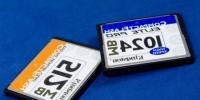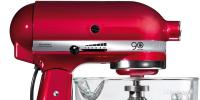Leonov's first spacewalk: history of exploration
When in 1961 Yuri Gagarin went to conquer space, the entire population of the planet was surprised and shocked by his feat. The following achievements of the USSR astronautics continued to amaze the whole world. Just a few years later, the first human spacewalk took place. Leonov Alexei Arkhipovich was the very cosmonaut who went down in history. The ship's crew commander was Pavel Belyaev.
the day before
Four years have passed since Yuri Gagarin's historic flight. All this time, humanity continued to watch with enviable interest the race of 2 superpowers in space - the USA and the USSR. They have already managed to send several manned spacecraft into orbit. And in 1964, the leadership of the Communist Party informed the world that three Soviet cosmonauts had flown to the stars at once. Accordingly, the next fundamental step should be an exit into open space.
Meanwhile, both states continued to pursue their own space programs. For example, experts understood that during long-term flights the astronaut would sooner or later have to carry out certain work outside the spacecraft. It was also clear that they would be carried out exclusively by the pilots themselves. Therefore, it was urgently necessary to develop an efficient and, most importantly, safe system for carrying out such work. In the Soviet empire, Academician Korolev dealt with these issues. And the thirty-year-old cosmonaut from the 1st detachment, Alexei Arkhipovich Leonov, turned out to be the main and direct executor of these undertakings.
To do this, scientists began to improve the Voskhod spacecraft. In February 1965, all work was already completed ... When was Leonov's first spacewalk? We will talk about this further.
advanced spacecraft
The ship "Voskhod-2" is an improved version of the apparatus, on which three pilots flew at once in the distant 1964, as mentioned above.
The new spaceship was adapted for the flight of two astronauts. On it, cosmonaut Leonov was supposed to make a spacewalk. A special inflatable lock chamber was provided on board for access to outer space. The system of the device was as follows: the chamber was inflated, which was already ready to receive the pilot. When preparations were made for landing, the camera automatically "shot back" and the spacecraft itself descended without it.
By the way, this whole experiment with the camera and the astronauts was pretty risky. The fact is that the specialists did not have time to thoroughly check the operation of absolutely all systems. One month before the flight, the unmanned spacecraft was blown up by mistake. After this incident, S. Korolev and M. Keldysh had a long conversation with the pilots. As a result, the planned spacewalk by cosmonaut Leonov was not cancelled.
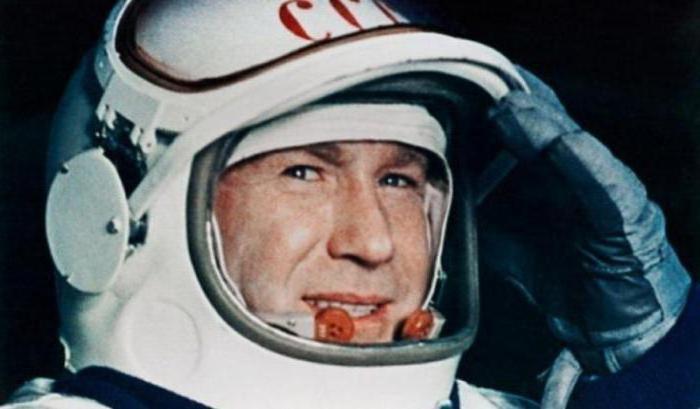
The versatility of the "golden eagle"
All domestic spacesuits were named after birds of prey. So, there is a space suit "Orlan". There is "Krechet", there is "Hawk", "Falcon" ... The very first spacesuit for entering outer space was called "Berkut". He weighed about 40 kg. In conditions of weightlessness, this indicator absolutely did not matter. But, however, this figure gave an idea of the seriousness of the whole structure.
The spacesuit systems were very efficient and quite simple. So, experts abandoned the regeneration plant, and when exhaled, carbon dioxide was directly released into outer space.
This suit was used once when the Belyaev-Leonov crew went into space. Experts say that Berkut is still considered not only the only and unique spacesuit, but also universal. And the versatility consisted in the fact that it is intended both for rescuing astronauts in case of depressurization of the spacecraft, and for leaving a person into open space.
Obvious Threats
Our contemporaries are well aware of the dangers that a priori may threaten a pilot in outer space.
- The pilot may lose contact with the aircraft. So, Alexei Arkhipovich Leonov was tied to Voskhod-2 with a reliable halyard. Its length is 5.5 m. During the historical exit of man into open space, the cosmonaut repeatedly stretched out to the length of the cable, and then pulled himself up to the apparatus. In fact, it was only thanks to the strength of this safety line that the pilot could actually return home.
- In open space, an astronaut could encounter the so-called "space debris". True, in those days such a possibility was negligible. Recall that before Voskhod-2, only eleven manned spacecraft and a number of satellites were in orbit. All of them were quite in low orbits and, accordingly, the lion's share of the debris that remained after them quickly burned out. Thus, they did not have time to harm anyone.
- Of course, the pilot has a serious risk that he will run out of oxygen. The Berkut suit was designed specifically for spacewalks. He has complete autonomy. Air supply - 1666 l. The maximum duration of stay outside the apparatus is 45 minutes. During this time, the pilot must have time to enter the airlock, go into space, go into free flight and return to the airlock. No resource was provided for the correction of possible errors or salvation at all.
- The astronaut may be in danger of hypothermia or overheating. So, Leonov successfully managed to complete his exit before the spacecraft fell into the shadow of our planet. Otherwise, such low temperatures could seriously complicate all the actions of the astronaut. In addition, in pitch darkness, he would not be able to cope with the safety cable and the entrance to the airlock.
- In open space, an astronaut could receive a certain dose of radiation. When cosmonaut Leonov made the first spacewalk, he, according to him, was very lucky. The fact is that in his exit into space, he only touched the edge of the radiation-dangerous zone. When Leonov returned, experts recorded a rather large dose of radiation from him, but this, fortunately, did not lead to damage to his health.
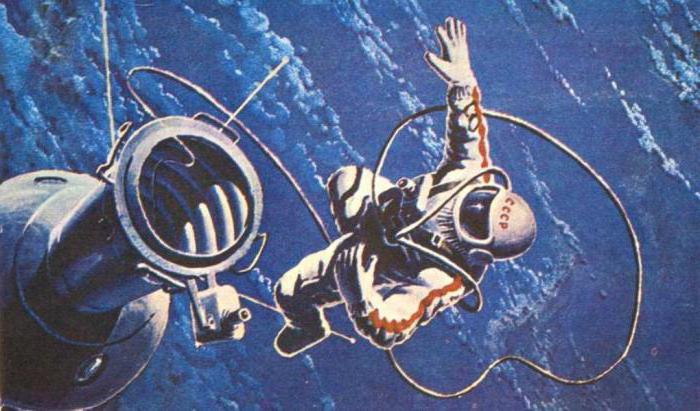
Mission Complete
The date of the spacewalk of Aleksey Arkhipovich Leonov is March 18, 1965. A spacecraft called Voskhod-2 took off from the ground from Baikonur. As soon as the ship entered orbit, the airlock was inflated on the very first orbit. When Voskhod was already entering the second orbit, Leonov moved into the chamber. After that, the crew commander finally battened down the hatch behind his colleague.
A few minutes later, air began to bleed in the chamber. And two minutes later the pilot had already decided to go into an abyss unknown to him - into outer space.
He began to conduct experiments and observations, which were provided by the program. He moved away from the apparatus by a meter and returned. He constantly talked on the radio station not only with Belyaev, but also with employees of ground services.
After some time, the commander managed to connect the phone in the Leonov spacesuit to the broadcasts of the capital's radio. At this moment, the announcer Levitan was reading an informational message about the exit of the Soviet man into outer space. And the entire population of the planet, through television broadcasting from the cameras of the apparatus, could see that Alexei Arkhipovich Leonov nevertheless made a spacewalk. He waved his hand to the whole world right from there...
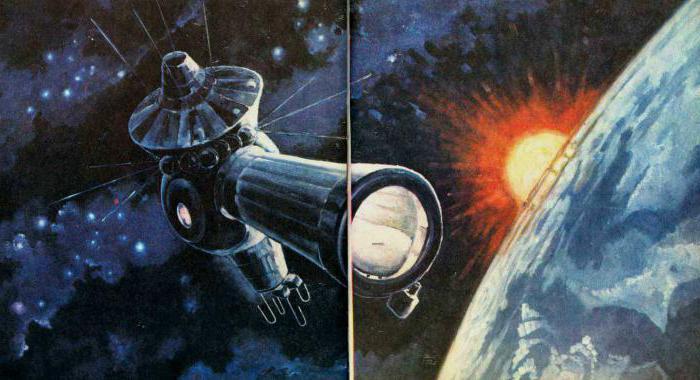
3001 problem
Leonov's spacewalk could end very badly. When the astronauts carefully prepared for the flight, they worked out three thousand different emergency situations. Of course, they found the same number of solutions. However, Alexei Leonov has repeatedly admitted that in outer space, according to the law, the 3001st unforeseen situation will also arise. And that is what needs to be addressed urgently. So, in fact, it happened.
When the outer space experiment program ended, Leonov was ordered to return. But it was very difficult to do so. Due to the pressure in space, the suit lost its flexibility. Besides, he was bloated. In other words, the astronaut was inside an inflated and rather large balloon. And, accordingly, he was not able to climb into the airlock. In addition, the supply of oxygen in the "Berkut" was running out. Thus, Leonov had to make a certain decision. And urgently. First, he wanted to report an emergency situation on Earth. But then he realized that advice would not help him, since he was the only person who had ever encountered something like this.
Be that as it may, the astronaut found a way out of the apparent impasse. In defiance of all instructions, he vented excess oxygen to reduce the size of the suit and pulled himself head first into the airlock. By and large, he managed to do this only thanks to his excellent physical training.
After that, Alexei Arkhipovich Leonov, with tremendous efforts, was able to turn around, lifting the hatch. Air began to enter the chamber. It seemed that all the dangers had finally passed ...
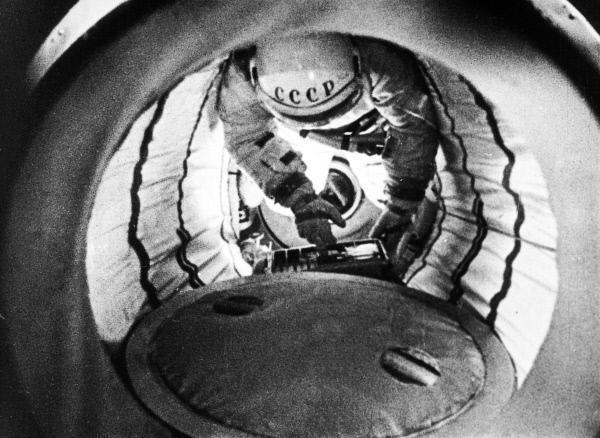
Long way home
So, the struggle of the Soviet cosmonaut Alexei Arkhipovich Leonov for life, fortunately, has already ended. However, an equally serious problem arose on board. The fact is that the partial pressure of oxygen was recorded in the cabin. And it kept growing and growing. And, accordingly, if the smallest spark appears in the instrument circuits, then all this could lead to a real explosion.
Later, the cause of this problem was found out. For a long time, the apparatus heated up unevenly, as it was corrected relative to the Sun. Because of this, the hull of the ship was slightly deformed.
In addition, as it turned out, air was escaping from a small gap in the hatch of the cell. Unfortunately, the Soviet cosmonauts could not deal with the problem and therefore watched the instrument readings with horror. However, when the pressure returned to normal, the hatch slammed shut, and the threat finally disappeared.
True, the troubles of the crew did not end at all. Voskhod 2 should start landing after the seventeenth orbit. However, the braking technique in automatic mode for some reason did not work. The spacecraft was in orbit. The crew members had to carry out the landing program in manual mode. Belyaev was able to orient the ship in the correct position, sending it to a deserted taiga area. According to the recollections of the commander, at that moment he was most afraid that the device would fall into a densely populated area or touch power lines.
There was also the danger of landing in then unfriendly China. Fortunately, this did not happen.
The ship landed in a dense snow-covered taiga, thirty kilometers from the town of Berezniki, in the Perm region.
Unfortunately, the astronauts were not immediately found. From the helicopter, rescuers quickly found the parachutes, which hung on the branches of tall trees. But landing the aircraft was very difficult. And at that time it was not possible to pull out the landing crew members. Thus, for two days the astronauts sat in the forest and waited for help. At the same time, thirty-degree frosts began.
For insulation, they used parachutes and spacesuits. They also lit a fire. In the morning, a rescue party arrived a few kilometers from the landing site of the spacecraft. They were clearing the area for the helicopter. In addition, they managed to throw warm clothes and food off him. And a group of specialists went down on the ropes together with a doctor. It was they who were able to provide the astronauts with the best conditions. So, they erected a hut, equipped sleeping places, and the next day the platform for receiving the helicopter was finally prepared. True, everyone had to ski another nine kilometers to get to it.
Some time later, the cosmonauts flew to Perm aboard a helicopter. First of all, they called the head of the Soviet Union, Leonid Brezhnev. They reported that the first spacewalk of Alexei Leonov and Pavel Belyaev had been successfully completed. A day later, they were already met by the capital ...
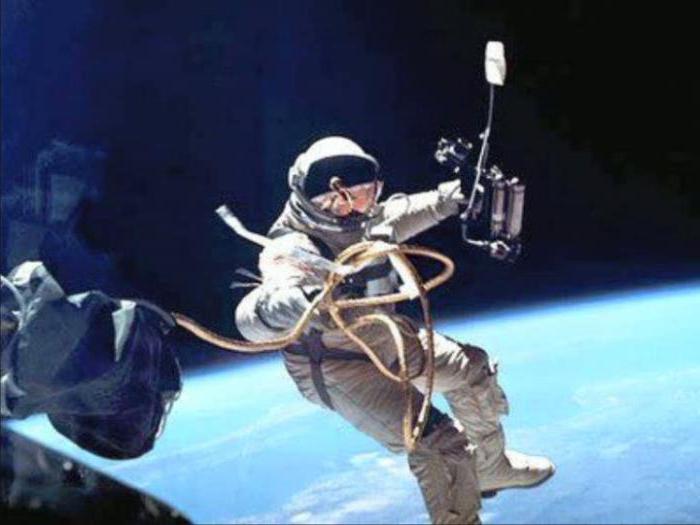
well deserved fame
Alexey Arkhipovich Leonov was the 15th pilot who went into space. In addition, he is considered the person who was able to take a fundamental step after the great Gagarin.
In the fall of 1965, the FAI (International Aviation Federation) officially confirmed the record for a man in space. Leonov's spacewalk lasted a little over twelve minutes. He was awarded a prestigious medal called "Cosmos". This award of this federation is considered the highest. In addition, the commander of "Voskhod-2" P. Belyaev was also awarded a diploma and a medal.
At home, Leonov was awarded the title of Hero of the Soviet Union. However, the merits of the Soviet cosmonaut were marked by many other awards. By the way, one of the lunar craters bears his famous name.
Followers
The first spacewalk was carried out by the Soviet crew 2.5 months earlier than the US astronauts.
The first US pilot who was in open space was E. White. It happened at the very beginning of the summer of 1965. The duration of stay in outer space is twenty-two minutes.
And in the spring of 2001, White's compatriot S. Helms broke the record for longest stay in space. This American woman was in space for almost nine hours!
The national cosmonaut A. Solovyov became the undisputed champion in the number of exits. Sixteen times he had to go into outer space. At the same time, the total duration of his stay there is more than eighty-two hours, which, in fact, is also a record.
The first person who went into interplanetary space was A. Warden from the USA. He was one of the participants in the famous lunar expedition. The astronaut had to go into space in order to transfer the finished negatives from one module to another.
Well, the first woman who went into space was Svetlana Savitskaya. Her exit into the open space took place in the middle of the summer of 1984 ...
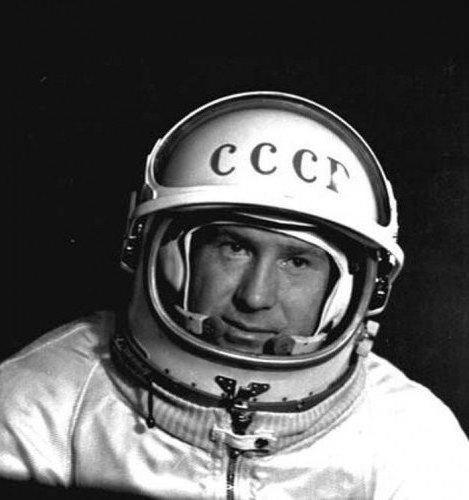
"Time of the First"
A film was made about the events associated with the first manned spacewalk. The film was released in the spring of 2017. The producers of the project were T. Bekmambetov and E. Mironov, including. According to them, they were inspired by the heroism of the Voskhod-2 crew members. As a result, the producers created a large-scale motion picture called "Time of the First". Naturally, the state corporation Roskosmos supported this project in every possible way.
In fact, the events of those historical days are not scrupulously restored in this tape. And the goal of the producers was still different. They were not even filming a feature film, they were working on a sci-fi film based on a real and legendary flight on March 18, 1965.



